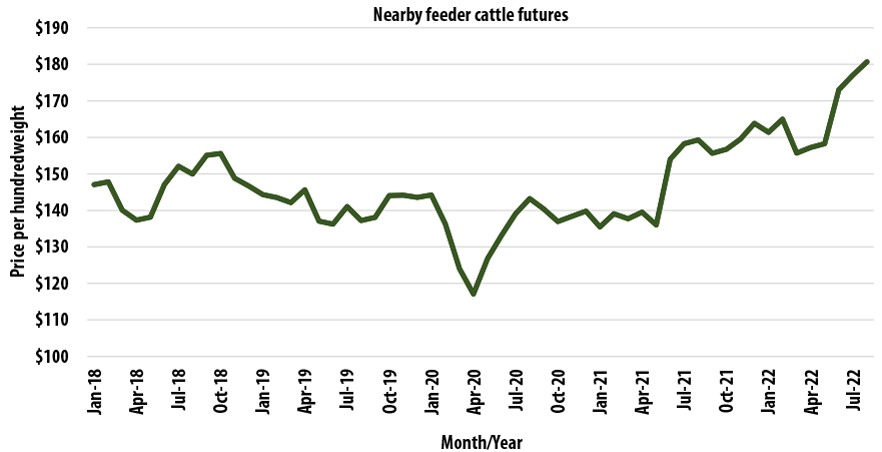Proactive Protection: Bagley Risk Management Strategies
Understanding Livestock Danger Security (LRP) Insurance Policy: A Comprehensive Guide
Navigating the realm of animals threat defense (LRP) insurance can be a complicated endeavor for many in the farming industry. From how LRP insurance works to the numerous protection choices available, there is much to reveal in this comprehensive guide that might potentially form the means livestock producers approach threat management in their services.

How LRP Insurance Functions
Periodically, understanding the mechanics of Livestock Threat Protection (LRP) insurance coverage can be complicated, yet breaking down just how it functions can supply clarity for farmers and herdsmans. LRP insurance policy is a threat administration tool designed to protect livestock producers against unforeseen rate decreases. The plan allows manufacturers to establish a coverage level based upon their details demands, selecting the number of head, weight range, and insurance coverage rate. Once the policy remains in place, if market prices drop below the coverage cost, manufacturers can sue for the distinction. It is essential to keep in mind that LRP insurance coverage is not a revenue assurance; rather, it focuses exclusively on cost danger protection. The protection duration normally varies from 13 to 52 weeks, offering flexibility for manufacturers to choose a period that straightens with their manufacturing cycle. By utilizing LRP insurance policy, farmers and ranchers can minimize the financial dangers related to changing market value, guaranteeing higher security in their procedures.
Qualification and Coverage Options

When it comes to insurance coverage options, LRP insurance supplies producers the adaptability to select the protection level, protection duration, and endorsements that ideal suit their threat monitoring needs. By understanding the qualification criteria and insurance coverage choices readily available, animals producers can make informed decisions to take care of risk efficiently.
Pros and Disadvantages of LRP Insurance Coverage
When examining Animals Threat Defense (LRP) insurance policy, it is crucial for livestock producers to weigh the drawbacks and benefits inherent in this danger management device.

One of the main benefits of LRP insurance is its ability to supply defense versus a decline in livestock costs. This can assist guard producers from financial losses arising from market fluctuations. In addition, LRP insurance supplies a degree of versatility, allowing producers to personalize insurance coverage levels and plan periods to suit their details needs. By securing in an ensured rate for their animals, producers can better take care of risk and plan for the future.
However, there are also some downsides to take into consideration. One constraint of LRP insurance is that it does not shield versus all kinds of threats, such as condition break outs or natural disasters. Additionally, costs can sometimes be pricey, especially for producers with huge livestock herds. It is important for producers to very carefully assess their private risk direct exposure and financial situation to establish if LRP insurance is the right threat monitoring tool for their operation.
Recognizing LRP Insurance Premiums

Tips for Making Best Use Of LRP Perks
Making the most of the benefits of Livestock Danger Protection (LRP) insurance requires calculated preparation and proactive risk administration - Bagley Risk Management. To make the many of your LRP insurance coverage, consider the following tips:
Frequently Examine Market Problems: Keep educated concerning market fads and rate variations in the animals industry. By keeping track of these elements, you can make educated choices concerning when to acquire LRP coverage to protect against possible losses.
Set Realistic Insurance Coverage Levels: When picking coverage levels, consider your manufacturing expenses, market value of animals, and possible dangers - Bagley Risk Management. Setting sensible protection levels guarantees that you are properly safeguarded without overpaying for unneeded insurance policy
Expand Your Protection: Rather than depending entirely on LRP insurance, consider diversifying your threat monitoring methods. Integrating LRP with various other threat administration devices such as futures agreements or options can provide thorough insurance coverage against market uncertainties.
Testimonial and Change Coverage Routinely: As market problems change, occasionally examine your LRP coverage to guarantee it aligns with your existing risk direct exposure. Changing coverage levels and timing of acquisitions can assist optimize your danger protection link method. By following these pointers, you can optimize the benefits of LRP insurance policy and protect your animals operation against unpredicted dangers.
Final Thought
To conclude, livestock risk security (LRP) insurance is a beneficial device for farmers to manage the economic risks related to their animals operations. By recognizing how LRP functions, eligibility and coverage alternatives, in addition to the benefits and drawbacks of this insurance coverage, farmers can make enlightened choices to protect their incomes. By thoroughly taking into consideration LRP costs and implementing methods to make best use of benefits, farmers can alleviate prospective losses and guarantee the sustainability of their site link procedures.
Animals manufacturers interested in obtaining Livestock Danger Defense (LRP) insurance policy can explore a range of eligibility requirements and protection choices tailored to their certain animals procedures.When it comes to insurance coverage alternatives, LRP insurance policy supplies manufacturers the adaptability to pick the insurance coverage degree, coverage period, and endorsements that ideal match their threat monitoring requirements.To comprehend the ins and outs of Animals Danger Security (LRP) insurance coverage completely, understanding the factors influencing LRP insurance costs is vital. LRP insurance policy costs are determined by numerous elements, consisting of the insurance coverage level selected, the expected rate of animals at the end of the protection period, the kind of animals being insured, and the size of the protection duration.Review and Adjust Insurance Coverage Frequently: As market conditions transform, regularly evaluate your LRP insurance coverage to guarantee it aligns with your existing danger exposure.